#museo galileo
Explore tagged Tumblr posts
Text
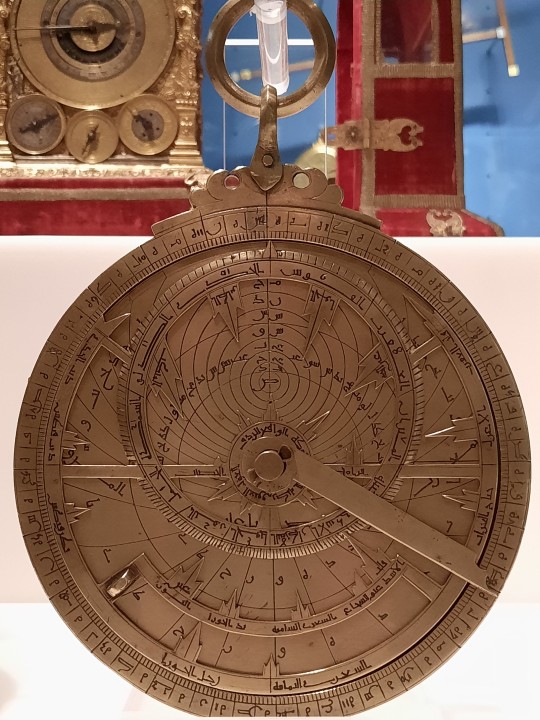
Astrolabe, Arabic, 10th C.
On display in the Museo Galileo, Florence
#scientific instruments#astrolabe#history of science#Museo Galileo#Florence#photography#personal collection
9 notes
·
View notes
Text
Nocturnal: Ligne de foy
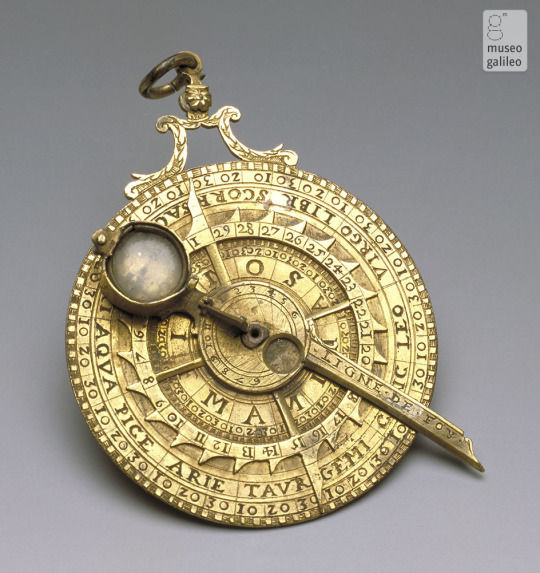

Dial consisting of a disk engraved on both sides. The recto bears markings for the zodiac signs, months, and days. On it rotates a circle divided into 29 parts and carrying two indexes; on this circle is a small rotating disk fitted with a gnomon, a compass, and an index with the French inscription "Ligne de foy" [line of trust]. On this side the instrument could be used either as a sundial or a nocturnal. The verso carries the hour lines and a small tilting gnomon. There is a suspension ring. The inscriptions in French and the word "Pign" engraved on the index suggest the instrument was made by a craftsman named Pineau
30 notes
·
View notes
Text
Scienza e arte insieme per indagare la mente umana. Il progetto punta a misurare il benessere delle persone esposte alle pratiche culturali e artistiche, promuovendo il concetto di museo (e di altri spazi educativi e culturali) come luogo di cura.
#Alessandra Gallone#Alessandra Petrucci#Alessandria today#Anna Maria Bernini#arte e neuroscienze#arte e scienza#benessere culturale#benessere psicofisico#connessione tra arte e mente#cultura e mente umana#cultura per il benessere#esperienze culturali#esperimenti di neuroestetica#Firenze#Francesco Pavone#Google News#impatto dell’arte sulla psiche#impatto dell’arte sulla salute#innovazione museale#italianewsmedia.com#LENS#meditazione e mindfulness#misurazione della percezione estetica#musei come luoghi di cura#musei e benessere#Museo Galileo#neuroestetica#neuroscienze#Patrimonio artistico#percezione estetica
0 notes
Text
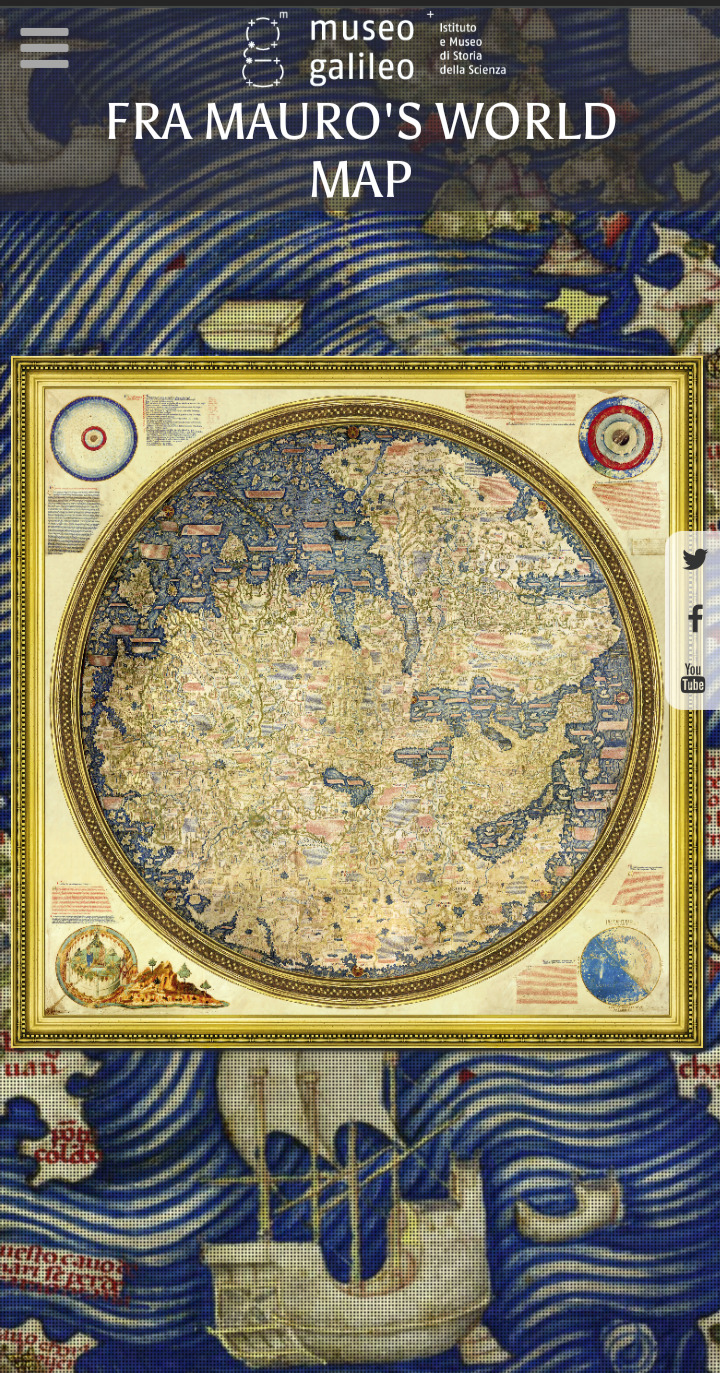
Mappa Mundi: Fra Mauro
This 2.5m² mappa mundi was created by Venetian monk and cartographer Fra Mauro around the 1450s. Compiled according to various existing maps and traveller accounts it was the most detailed and accurate map generated at that time, full of annotations, and it broke from tradition as it put accuracy ahead of religious or traditional geographical depictions.
Information about the solar system, elements, Garden of Eden and overall globe features of earth such as the poles and equator are depicted in the four corners.
The map can be seen hung in Venice but can also be explored in interactive digital form on the Museo Galileo website, complete with translations, videos and context.
https://mostre.museogalileo.it/framauro/en
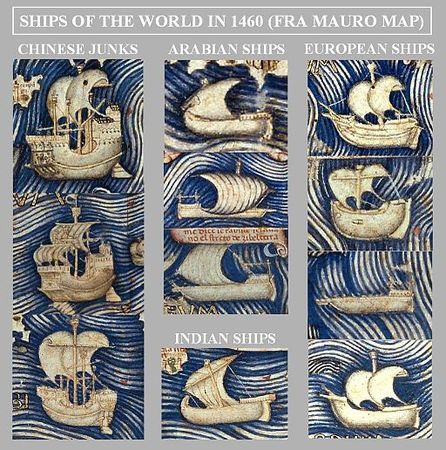
General overview on Wikipedia
Video: The greatest map of the medieval world | BBC Global
youtube
"On the second floor of the Library of Saint Marks in Venice, Italy, a map of the world occupies an entire room. The Mappa Mundi, completed by Italian monk and cartographer Fra Mauro in 1459 AD, is the compendium of all the geographical knowledge of the time and is arguably the greatest medieval map of the world."
(Now to see what some of my ancestors were thinking about some other ancestors 🤔🤭)
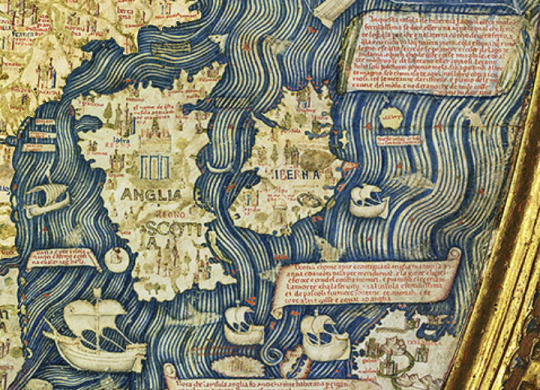
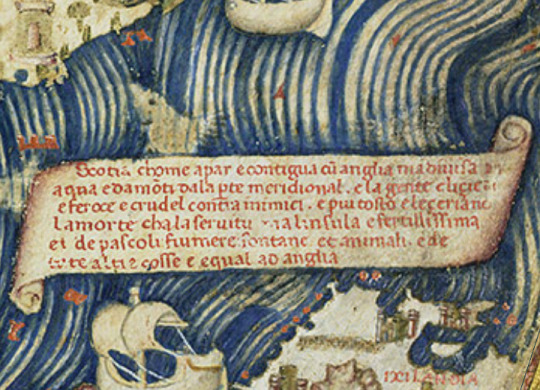
Transcription (venetian dialect)
Scotia come apar è contigua cum anglia ma divisa da aqua e da monti da la parte meridional e la gente è liçiera e feroce e crudel contra i nimici e piutosto eleçeriano la morte cha la servitù, ma l'insula è fertillissima et de pascoli, fiumere, fontane et animali e de tute altre cosse e equal ad anglia
Translation
As it is shown, Scotia appears contiguous to Anglia, but in its southern part it is divided from it by water and mountains. The people are of easy morals and are fierce and cruel against their enemies; and they prefer death to servitude. The island is very fertile in pastures, rivers, springs and animals and all other things; and it is like Anglia
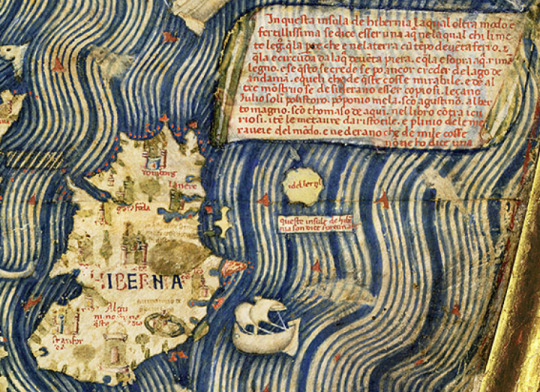
Transcription (venetian dialect)
In questa insula de hibernia, la qual oltra modo è fertilissima, se dice esser una aqua ne la qual chi li mete legno quela parte che è ne la terra cum tempo deventa ferro e quela è circumdada da l'aqua deventa piera e quela è sopra aqua riman legno, e se questo se crede se pò ancor creder de lago de andaman, e queli che de queste cosse mirabile e de altre monstruose desiderano esser copiosi, leçano Julio Solin polistoro, Pomponio Mela, sancto Agustino, Alberto Magno, sancto Thomaso de Aquin nel libro contra i curiosi, item le Metaure d'Aristotile e Plinio de le meraveie del mondo e vederano che de mile cosse non ne ho dite una
Translation
In this island of Hibernia, which is most extraordinarily fertile, it is said that there is a water in which, if you immerse wood, after a while that part of the wood which is in the earth becomes iron, whilst that in the water becomes stone, and that above the water remains wood. And if one believes this thing, one can also believe in the lake of Andaman. Those who wish to have plentiful information on these wonderful and these monstrous things should read Julius Solinus's Polyhistor, Pomponius Mela, St. Augustine, Albertus Magnus and St. Thomas Aquinas in his book against the curious. Similarly, they can read Aristotle's Meteorology and Pliny on the wonders of the world, and they will see thousands of things of which I have not mentioned one
So, pretty much bang on lads! 👍😂
#mappa mundi#fra mauro#maps#cartography#cartographer#world map#museo galileo#Venetian#Venice#ships#history#Italy#Scotland#Ireland#geography#religion#bbc#M#video#YouTube#medieval#medieval history
1 note
·
View note
Text
Firenze / La storia della formazione medico-chirurgica nei codici e negli antichi libri della Biblioteca Laurenziana
Firenze / La storia della formazione medico-chirurgica nei codici e negli antichi libri della Biblioteca Laurenziana
Redazione “Edocēre medicos. Storia della formazione medico-chirurgica a Firenze” è il titolo della mostra ospitata dalla Biblioteca Medicea Laurenziana per il centenario dell’Ateneo fiorentino e a cento anni dall’ingresso dei primi pazienti nell’Ospedale di Careggi. È stata realizzata dal Sistema Bibliotecario di Ateneo, con la Scuola di Scienze della salute umana e i suoi Dipartimenti, insieme…
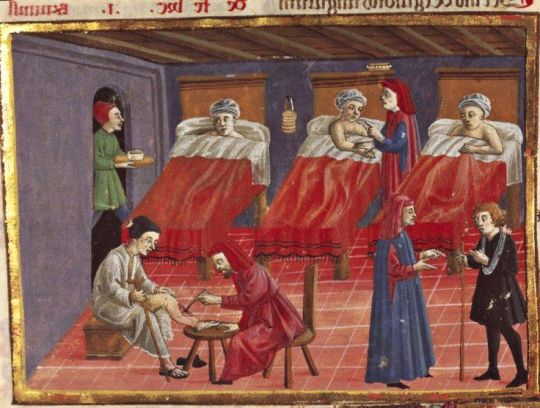
View On WordPress
#Biblioteca Biomedica dell&039;Università di Firenze#Biblioteca Medicea Laurenziana#Biblioteca Medicea Laurenziana di Firenze#codici#codici manoscritti#codici miniati#Donatella Lippi#firenze#Francesca Gallori#Giulio Chiarugi#manoscritti#medicina#mostre#Museo Galileo#Simona De Lucchi#storia della medicina#Università di Firenze
0 notes
Text
Florence, day 1, part 1
After a night of sleep (after moving our beds apart, because apparently in Italy they assume that when you request two beds, surely you want them shoved together to form one bed), we were in a slightly better mood and ready to see Florence.


We separated for the morning; Jilli went to the Accademia Gallery to see Michelangelo's David, while I went to the Museo Galileo, a science history museum. It was full of old scientific instruments for navigation, measurement, and experimentation. I learned that in Italian, the words for "compass" (the kind that draws circles) and "compass" (the kind that tells you which way is north) are different, which is one advantage Italian has over English, especially in a museum that is full of both kinds of compasses.



Their most prized object is probably this enormous Ptolemaic model of the universe:

But it also might be Galileo's finger. Which they have for some reason.

I liked the tools that were used to demonstrate various principles of physics, and the exhibit of clocks.


I also liked these metal spheres that were used to demonstrate the non-compressibility of liquids, because I assume that means they just filled them with water and went to town on them with a baseball bat.

My only problem with the museum was that I wanted to touch everything and I wasn't allowed to touch anything.
0 notes
Text
MUCHA - CHINI Firenze - Museo degli Innocenti
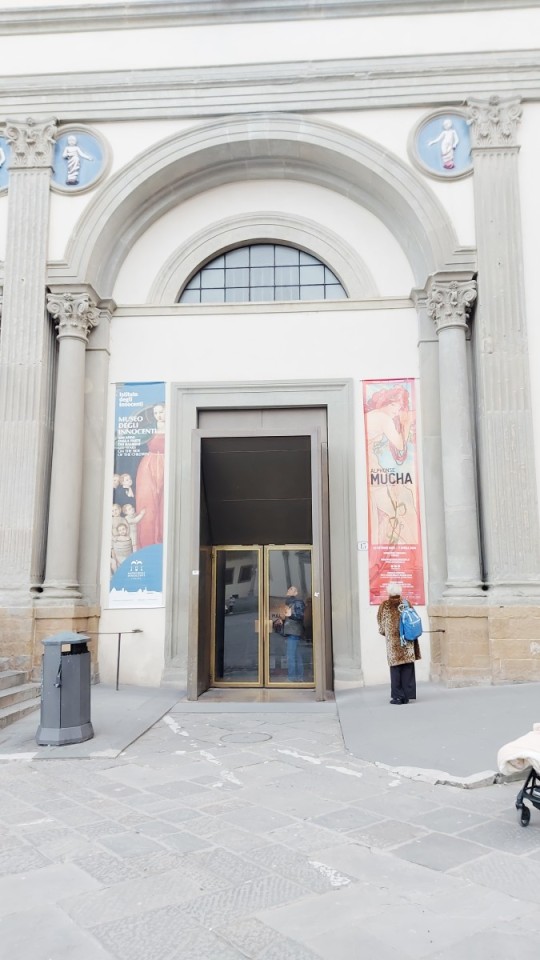
View On WordPress
#Alphonse Mucha#Art Nouveau#Arte#Firenze#Galileo Chini#Liberty#Mostre#Museo degli Innocenti#Scultura
3 notes
·
View notes
Text

Cento anni di storia della scienza a Firenze
- DATA INIZIO: 20/06/2025 - DATA FINE: 19/10/2025 - LUOGO: Museo Galileo Piazza dei giudici, 1 - Firenze
0 notes
Text

Il ministro Sangiuliano vuole rimuovere dal suo posto il direttore del Museo Egizio di Torino Christian Greco, al suo posto è indeciso se nominare Galileo Galilei o Cristoforo Colombo.
C'è una petizione per impedirlo: firmala!
1 note
·
View note
Text

Galileo Galilei (1564–1642) was not only a pioneering Italian astronomer but also a figure of considerable historical significance whose legacy extends beyond his scientific contributions. A rather extraordinary artifact associated with him is his middle finger, which was removed in 1737, almost a century following his death. This finger is currently housed in the Museo Galileo in Florence, Italy, where it is encased in a gilded glass egg. This unconventional relic stands as a tangible representation of Galileo's rebellion against the prevailing doctrines of the Church, which had condemned him for promoting the revolutionary heliocentric theory—that the Earth revolves around the Sun. The existence of this artifact, dating from the time of his exhumation, serves as a poignant reminder of Galileo's enduring influence on scientific thought and the audacity with which he confronted established paradigms.
55 notes
·
View notes
Text

The middle finger from the right hand of Italian astronomer Galileo Galilei (1564–1642) is a secular relic in the collection of the Museo Galileo in Florence, Italy.The finger was removed from his body after his death and is encased in a gilded glass egg.
49 notes
·
View notes
Text
" La città è chiara, in nessuna altra città del mondo i punti cardinali sono così precisi e servono tanto all'uomo: Est, West, Sud, Nord. Si sa sempre dove ci si trova, e anche il Sole fa il suo corso rispettando le regole. Si è perfettamente collocati. Ma come? Forse il segreto è guardare attorno la gente e ci si sorprende allora della loro franchezza. Una sera capita per caso in un teatro sperimentale. New York ha tanti teatri che invece di andarci tutte le sere il turista-scrittore è stato tentato di scrivere una commedia. Ma una sera va in un teatrino dove non si rappresenta niente, se non quello che gli spettatori vorranno rappresentarvi. Il turista conta gli spettatori: sono quindici, lui compreso. Vi sono alcune ragazze e tre di queste salgono sui palcoscenico. Cominciano a raccontare la loro vita e a viverla senza vergogna e senza letteratura. Alla fine dello spettacolo il turista le ama. Un'altra sera, scendendo (come una palla nei piani inclinati di Galileo) la vite (the screw) del Museo Guggenheim, è felice perché ha capito — ma ha ancora tante cose da capire — che una città è fatta come la gente che ci vive. Egli sta semplicemente vivendo. "
---------
Brano tratto dall’articolo pubblicato su American Vogue il 1° novembre 1967 con il titolo «Travel», poi raccolto in:
Ennio Flaiano, Un giorno a Bombay e altre note di viaggio, a cura di Rossana Dedola, Rizzoli, Milano, 1980¹; p. 104.
#Ennio Flaiano#citazioni#letture#leggere#intellettuali italiani del '900#Un giorno a Bombay#anni '60#testi brevi#reportage#note di viaggio#New York City#USA#America#American Vogue#giornalismo#turisti#turismo#vivere#vita#Museo Guggenheim#teatro#Grande Mela#appunti di viaggio#meditazioni#riflessioni#città#cittadini#viaggiare#viaggiatori#Rossana Dedola
9 notes
·
View notes
Text
A Very Scandalous Astrolabe
Posting these (very raunchy) images got my Twitter account suspended. So only the deviants on Tumblr can enjoy sexy astrolabe action


This small astrolabe carries four tympanums for latitudes 24°/30°, 31°/35°, and 32°/36° (corresponding to Persia), and for latitude 0° (i.e., the circle of the equator) and 66°. There is an alidade and a rete. The back of the mater displays a lunar calendar, in accordance with Islamic use, a shadow square, and a quadrant. The instrument is dated 496 of the Hegira (1102-1103 of the Christian era) and is signed by its maker, Muhammad 'Ibn Abi'l Qasim 'Ibn Bakran, on whom we have no information
15 notes
·
View notes
Text
4 Regni per Natale: magia, cultura e divertimento ad Alessandria. Un Natale indimenticabile con eventi per grandi e piccini.
Ad Alessandria, l’iniziativa “4 Regni per Natale” sta trasformando la città in un luogo incantato, grazie a un ricco programma di eventi che coniuga tradizione, cultura e divertimento. Promossa da Città di Alessandria, ASM Costruire Insieme, La Città Nostra e Facciamo Squadra Fraschetta, questa iniziativa natalizia coinvolge diverse location e offre attività gratuite grazie alla distribuzione di…
#4 Regni per Natale#Alessandria cultura#Alessandria eventi dicembre#Alessandria musei#Alessandria musei gratuiti#Alessandria today#animazioni Alessandria#ASM Costruire Insieme#Attività per Bambini#Casetta di Babbo Natale#coupon gratuiti#cultura e divertimento#esperienze natalizie#eventi culturali Natale#eventi natalizi#eventi per famiglie#festa natalizia Alessandria#giochi natalizi#Google News#Gruppo Astrofili Galileo#iniziative natalizie#italianewsmedia.com#laboratori creativi#laboratori natalizi#Magia del Natale#museo Alessandria#Natale Alessandria#Natale per famiglie#Pier Carlo Lava#planetario Alessandria
0 notes
Text










Just a little more gear and gadgetry from Museo Galileo. Plus a book cover that’s just perfect.
6 notes
·
View notes





